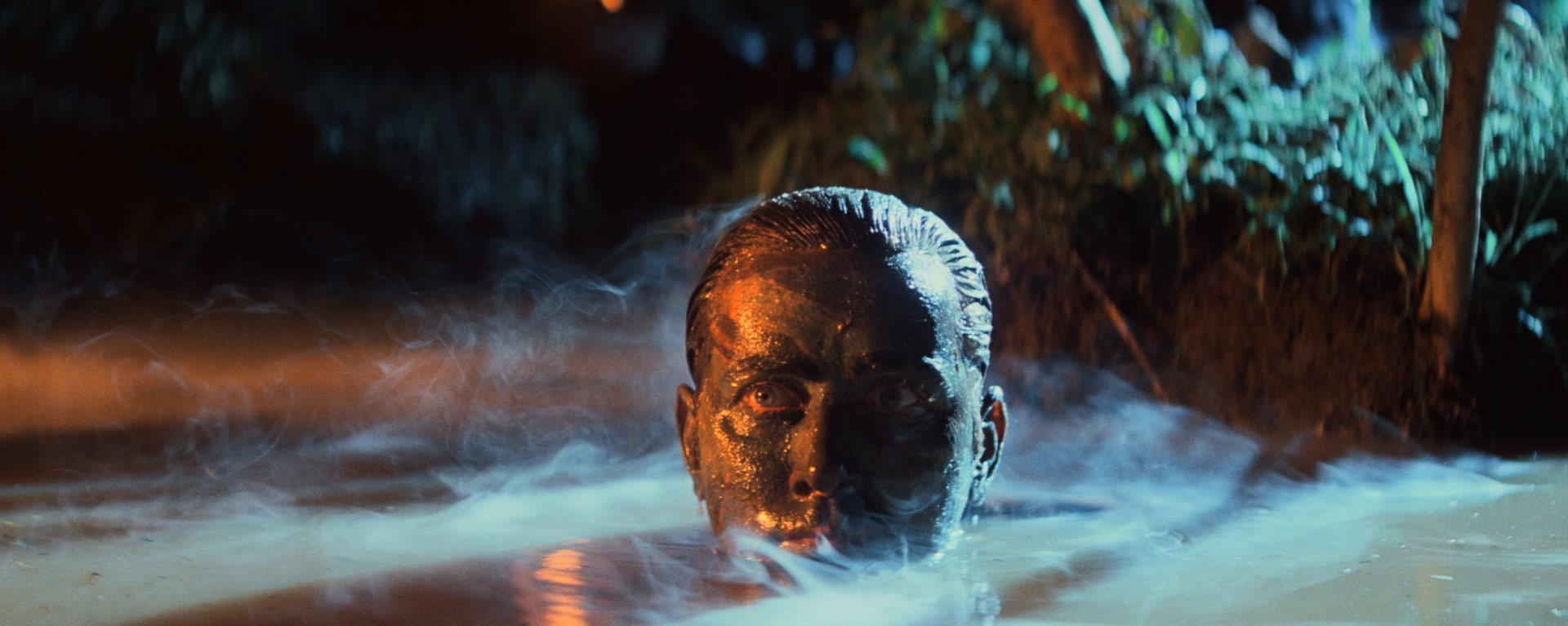
Apocalypse Now
Francis Ford Coppola’s Apocalypse Now was one of the most eagerly anticipated films of the 1970s. The wunderkind director had shot to prominence with his direction of The Godfather (1972) and was at the vanguard of the new ‘Movie Brats’ auteurs, along with Steven Spielberg, Martin Scorsese and George Lucas. The Godfather, an adaptation of Mario Puzo’s best selling Mafia novel, went further with the trends, established in the 1960s in such films as Bonnie And Clyde, for depicting violence in a highly stylised and lovingly rendered fashion and portraying violent criminals as tortured outsiders filled with angst.
After the enormous critical and financial success of the two Godfather films, Coppola’s subsequent mooted projects were a source of great interest for the film industry and the viewing public alike. He eventually settled on a film based largely on Joseph Conrad’s 'Heart of Darkness', a novel which dealt with moral ambiguity and the Victorians’ fear of and fascination for the ‘barbarism’ of colonial Africa.
Coppola’s film transposes the novel’s setting of Victorian colonialists in the Congo to the American experience in Vietnam, a useful and powerful parallel for those who had opposed the war there and the US government’s foreign policies. The Kurtz of the novel becomes an American colonel who has deserted his command and is fighting the war, with an army of renegades, on his own terms. Another officer is despatched into the jungle to end this apparent desertion with ‘extreme prejudice’ – that is, to assassinate Kurtz. The film won the Palme D’Or at the Cannes Festival, followed by Oscar success. The critics and public alike were fascinated by its drug-tinged surrealism and black humour. At the time it was hailed as the ultimate anti-war film.
Like The Godfather and many other films of the 60s and 70s Apocalypse Now seems a little staid in its themes and depictions of violence, viewed in an age of round the clock news, ‘extreme reality’ videos and the internet. The idea of atavism, or regression, by ‘civilised’ people into a primitive and murderous state was somewhat passé, even by the 70s and modern audiences were not as horrified, as the Victorians would have been, by tales of miscegenation and mass murder. The Holocaust, My Lai massacre, Charles Manson and highly popularised stories of serial killers had well and truly put to rest any reassuring beliefs about the superiority of Western civilisation and morality.
One element of the film still contains the ability to startle, however. In the final, bravura sequence Kurtz’s assassin fulfils his role, armed with a large machete. The slaying of the ‘sacred’ figure Kurtz is inter-cut with the actual ritual slaughter of a bullock by a local tribe, many of whom had been acting as extras on location in the Philippines. This powerful sequence is central to the ending and the film’s themes, as a whole, but raised the problem of animal cruelty and the Act of Parliament relating to it. The Cinematograph (Animals) Act 1937 was designed to prevent animals from being used as live and disposable props in films. In the heyday of the Western, for example, many horses were destroyed after being injured in stunts that involved them being tripped and felled for dramatic effect. Coppola’s film startled American audiences on a number of accounts, the dramatic ending sequence being among them.
The RSPCA wrote to the Director of the BBFC expressing concern at the scene prior to the film’s release in the UK. James Ferman seems to have informed them that he was of the view that this appeared to be an actual ritual slaughter which was not orchestrated solely for the purposes of the film and therefore did not fall foul of the Act. Also, he was of the opinion that the animal was killed very quickly and therefore humanely, another allowance under the Act.
In the recent DVD release of the work Coppola took some pains to stress that he did not arrange for the animal to be slaughtered for the film and that the ritual was one of many serendipitous events in the making of the film.
The sequence has attracted many complaints over the years and still attracts queries from the public. If the BBFC had felt compelled to remove the sequence then one of the most famous films in modern times would have been changed profoundly. Look at the new release and see what you think. Happy coincidence? A quick kill?